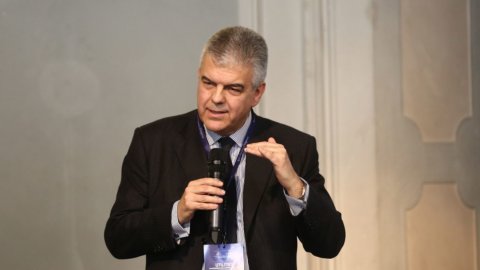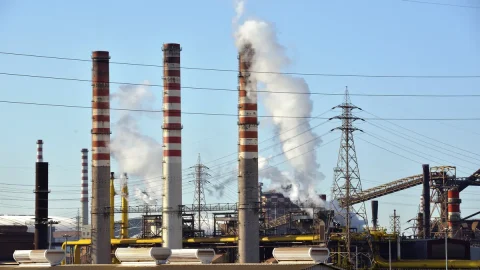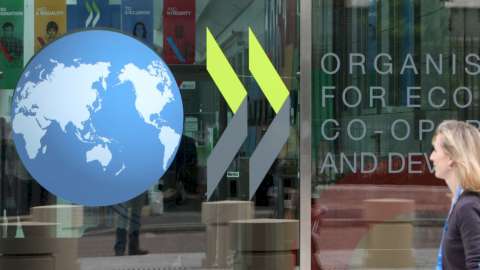A cultural revolution, in which Terna "has demonstrated that it can be and wants to be a protagonist". The industrial plan updated to 2023 and which it puts in place to strengthen the national electricity infrastructure unprecedented investment: 6,2 billion in the five years starting from the current year, of which 700 million in digitalisation, to which must be added the abundant billion already invested in 2018, in the first year of the plan launched by the then new CEO Luigi Ferraris. Of these 6,2 billion, 1,2 will be invested already in 2019, and over the course of the plan, 600 million must be added for unregulated activities and investments abroad. “Between now and 2040 – Ferraris told analysts – worldwide electricity demand will be 60% higher and renewable energies will pass from the current 25 to 41% share of production. Worldwide, 20 billion dollars will be invested in the energy transition over the next 20.000 years, of which almost 8.000 in renewables. And for every euro invested in renewables, it is necessary to invest at least one more to adapt the grid".
For Terna, the company that manages the national electricity grid, energy transition means first of all upgrading and modernizing the infrastructures that will have to manage ever greater and more flows from renewable sources, therefore not programmable, making the system "more resilient and secure also in the light of the ongoing climate change, which produces increasingly extreme natural events", explains Bastioli, who also talks about connecting the various infrastructures of the country to each other, always seeking "dialogue with local communities. We have to redesign society, through more inclusive structures and processes", favoring positive effects for 1.500 companies in the area. All this to anticipate a scenario that goes "increasingly from a centralized model to a widespread model and renewable sources, which cannot be programmed". The new network will therefore focus on innovation and sustainability, through digital, new measurement models and resilience. To start, 60% of new power lines installed will be invisible, or in underground or submarine cables with reduced environmental impact, against 375 km of old power lines that will be demolished. “Investments are up 20% compared to the previous program – commented the CEO Ferraris -. There has been a necessary acceleration, because renewables are accelerating and we are the enablers of renewables and decarbonisation”.
FINANCIAL OBJECTIVES
Sustainability, however central, is not however the only driver of Terna's strategy between now and 2023. In addition to robust investments (which will be more or less equally distributed throughout the country, with 43% in the Centre, 30 % in the North and 27% in the South) there are also ambitious financial objectives, starting with the remuneration of shareholders: in 2018 the dividend rose to 23,32 cents per share, and between 2019 and 2021 the company expects an average annual increase in the dividend per share of 7%, compared to that of 2018. For the years 2022 and 2023, a payout of 75% is also envisaged, with a guaranteed minimum dividend equal to the dividend for the year 2021. The strategy has convinced investors, given that the Terna stock , that in the 12 months since the presentation of the close-up of Ferraris he has already earned about 1 euro in value, he scored this morning in the opening the new all-time record, almost 5,6 euros per share, from 5,5 at yesterday's close.
As regards group revenues, Terna expects them to be around 2,7 billion euros in 2023, with EBITDA at around 2 billion euros: an average annual growth (CAGR) of over 4% for both indicators, more optimistic than the 2,55 billion in revenues and 1,9 billion in Ebitda forecast in the previous plan, presented a year ago, which, however, ended in 2022. Net profit is also expected to improve, with profit for share at around 42 euro cents in 2023. The value of regulated assets (RAB) will reach 18,5 billion euro in 2023 with a CAGR above 4%. In 2018, however, revenues grew by 1,6% to almost 2,2 billion, Ebitda by 2,9% to 1,65 billion, net income exceeded 700 million (+2,7%). However, net financial debt stood at 7.899,4 million euros, against 7.796,4 million euros as at 31 December 2017. “The company is solid – specified Ferraris, however -, all the ratings have been confirmed, and the ratio of net debt to RAB of less than 60% by the end of the plan, so we are confident on debt management as well. We do not need to return to the market at least until 2021, even if Italy's risk worsens. The increase in the spread is absorbed on long-term investments”. Employees increased by 355 units in 2018, exceeding 4.000 to 4.252, as a result of the ongoing strengthening.
UNREGULATED, INTERNATIONAL AND GREEN BOND ACTIVITIES
The domestic non-regulated activities sector will also be oriented towards supporting the energy transition. Terna plans to consolidate its role as Energy Solutions Provider, developing services for companies. The sector should make a contribution to the group's EBITDA of around 400 million over the plan period. On the international front, Terna has inaugurated the new power line in Brazil Santa Maria 3-Santo Angelo 2 which will make it possible to fully integrate large quantities of energy produced from renewable sources, in particular wind power, into the national grid. An implementation agreement was also signed last February between the Parish of Chacas and Terna Plus for the construction of over 16 km of power line in Peru which will allow the Huallin hydroelectric plant to be connected to the national grid, significantly increasing the production and transport of renewable energy for the benefit of both the local community and all the other disadvantaged populations supported by Operation Mato Grosso.
By the end of 2019, however, the activities in Uruguay and Montenegro will be completed: "As regards Montenegro, by the second half of 2019 the project will be finished and operational, in full line with the guidance we had given", added l 'Ad Ferraris. In January, Terna launched agreen bond issue in euros, at a fixed rate, in the form of private placements for a total of 250 million euros, which have been assigned a “BBB+” rating by Standard and Poor's, “(P)Baa2” by Moody's and “BBB+” by Fitch . The net proceeds of the issue will be used to finance the so-called eligible green projects of the company, confirming Terna's strategy aimed at combining sustainability and growth, to encourage the energy transition underway and generate ever greater benefits for the country and all stakeholders.





